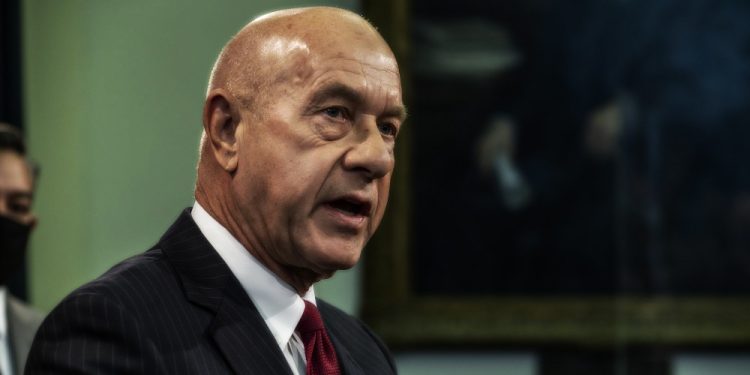(Natural News)—Houston Mayor John Whitmire, a Democrat elected in December, provided a bleak warning during a City Hall meeting about the city’s “broke” finances as he proposed a five percent cut across all city spending to alleviate the cash flow problem.
“I think we can all agree that we’re broke,” Whitmire said, before proposing the planned cuts. “This gives us a chance to discuss the financial picture of this city. It is broken. It was broken when I got here.”
With an estimated current deficit of at least $160 million, Whitmire’s current proposal is for a five percent across-the-board cut to the entire budget of the city’s government, with exceptions for the budgets of firefighters and police.
“I don’t like a five percent cut now, but you have to make tough decisions and folks put me in this position to make tough decisions, and I’m going to do my job,” said Whitmire. (Related: Mayor of El Paso, Texas says his city is now at BREAKING POINT due to influx of ILLEGALS.)
Whitmire’s short tenure has seen him cough up an additional $650 million from the city budget for seven years of back pay and an additional $180 million for annual wage hikes over the next five years following the conclusion of a long-festering labor dispute with city firefighters.
Analysts say the deal delivers taxpayers a substantial discount from the amount an arbitrator would have likely awarded the aggrieved firefighters.
“This is going to come down to a financial sacrifice by the City. Now we can either be $1.2 billion broke or we can be $650 million broke,” said City Councilmember Willie Davis of the deal.
Councilmember Tiffany Thomas expressed alarm at the city’s mounting debt and warned that the city government might start charging Houston residents more for services.
“Are we going to fee Houstonians? Is it a trash fee? Are we paying for parking after six? Are we going after Metro’s money? I mean what are we doing?” asked Thomas.
The mayor says the search for additional funding is underway and could include asking the taxpayers to step up. “I’m not going to play games with people’s lives. I’m not going to play politics with people’s lives. So we have a responsibility to settle with the firefighters and protect Houstonians,” said Whitmire.
Houston has had problems with inflated spending for years
Houston, the United States’ fourth largest city, has had a problem with its spending for years. But the Wuhan coronavirus (COVID-19) pandemic and the assistance the city received from the federal government during this time provided some leeway for the city to mask its overspending.
“COVID really silenced the conversation because we got so much money from the federal government that we were able to make our budgets work, but really, this problem started 20 years ago, almost a quarter of a century ago, with the pension funds,” said John Diamond, director of the Center for Public Finance at Rice University.
Former Mayor Sylvester Turner, another Democrat who left office in January, falsely claimed he was leaving the city with a $420 million surplus.
“The budget surplus is largely thanks to $1 billion in federal recovery funds Houston received during the pandemic, which Turner has mostly used to cover city expenses while driving up its reserve account,” wrote Houston Chronicle staff writer Dylan McGuinness.
-
Learn the TRUTH about Gold IRAs and how most precious metals companies play dirty.
During his time in office, Turner who could not run again due to term limits, was criticized by former Mayor Annise Parker, financial groups and even the city comptroller for his handling of public funds.
“Let me just say, the sky is not falling,” Turner told the local paper last year. But local critics insist Turner wasn’t telling the truth.
“This has been obvious to anyone following the city’s finances for well over a decade,” said local businessman Bill King. “The you-know-what would have hit the fan in the last administration had it not been for this incredible influx of federal dollars.”
A tax hike through a bond is expected in November.
“That’s very likely what we’re looking at, going to the voters this November and saying, ‘Here’s the plan, here’s what it’s going to cost, and we’re asking you to chip in,'” City Controller Chris Hollins said.
Critics say the city should not default to taxing residents when they could raise the money by cutting the fat inside city hall and selling city property, including a very valuable art collection owned by the city. “The first thing we need to do is find where the money is first as opposed to the typical liberal answer to every problem: raise taxes on the people,” conservative political analyst Gary Polland suggested.
Visit GreaterTexan.news for similar stories involving Texas and its cities. Watch this short clip of a flight full of illegal immigrants bound for Houston.
This video is from the GalacticStorm channel on Brighteon.com.
More related stories:
Houston hWE HAVE A PROBLEM: 4 Mexican drug cartels are operating inside Colony Ridge migrant settlement.
Sources include:





